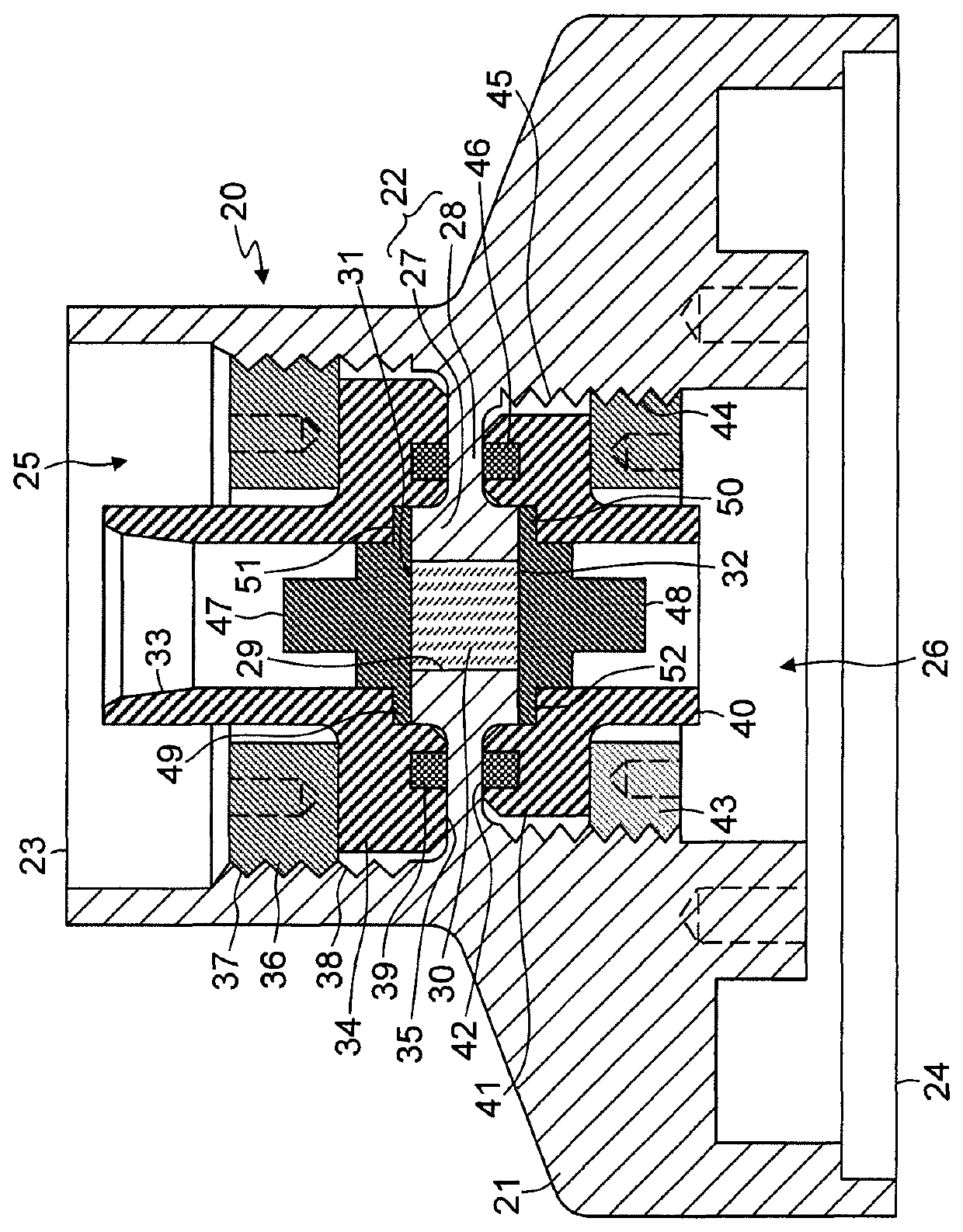Housing part for a measurement device having a microwave-permeable glass or ceramic window
a technology of microwave-permeable glass or ceramics and housing parts, which is applied in the direction of liquid/fluent solid measurement, instruments, machines/engines, etc., to achieve the effect of simple and cost-effectiv
- Summary
- Abstract
- Description
- Claims
- Application Information
AI Technical Summary
Benefits of technology
Problems solved by technology
Method used
Image
Examples
Embodiment Construction
[0032]The housing part comprises a one-piece single metal body 20 of axial symmetry that has an outer circumferential side wall 21 with varying outer diameter and wall thickness and an inner disc-shaped base wall 22. The side wall 21 provides, at an upper end 23, a connection facility for welding or otherwise fastening an electronics housing portion (not shown), and, at a lower end 24, a coupling interface structure for connecting an antenna, such as a horn antenna (not shown).
[0033]The base wall 22 is situated more or less in the middle between the upper end 23 and the lower end 24, thus defining, together with the side wall 21, an upper partially enclosed area 25 and a lower partially enclosed area 26. The base wall 22 comprises a flat circular center portion 27 that projects above and below a surrounding annular zone 28 of reduced wall thickness. Additionally, a pair of annular grooves may be recessed in the annular zone 28, where this is connected to the center portion 27. The c...
PUM
 Login to View More
Login to View More Abstract
Description
Claims
Application Information
 Login to View More
Login to View More - R&D
- Intellectual Property
- Life Sciences
- Materials
- Tech Scout
- Unparalleled Data Quality
- Higher Quality Content
- 60% Fewer Hallucinations
Browse by: Latest US Patents, China's latest patents, Technical Efficacy Thesaurus, Application Domain, Technology Topic, Popular Technical Reports.
© 2025 PatSnap. All rights reserved.Legal|Privacy policy|Modern Slavery Act Transparency Statement|Sitemap|About US| Contact US: help@patsnap.com

